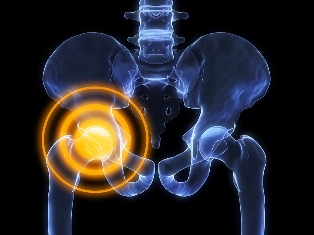Health Blog: Solutions & Wellness Tips
How Hip Issues Can Affect Patients With Patellofemoral Pain Syndrome

Condition lends to many associated factors, both within and outside of region
Patellofemoral pain syndrome (PFPS) is a common knee problem, and the umbrella term encompasses either anterior or retropatellar (behind the knee cap) pain and discomfort. PFPS patients may also experience other factors, including patellar tracking dysfunction, decreased flexibility or strength of the quadriceps and hamstrings, or joint laxity. The condition may also lead to psychological issues such as higher rates of depression, fear-avoidance or anxiety. Currently, multiple therapeutic interventions are used to address these factors and treat injured athletes, however, their effectiveness remains questionable. One new approach that's been gaining popularity and supporting evidence is the possibility that hip dysfunction may contribute to PFPS, and that improving the hip can therefore improve the knee. To test this theory, a review was conducted evaluating literature focused on the association of hip strength and lower extremity kinetics with PFPS.
Search strategy turns out moderate amount of studies
MEDLINE, CINAHL and SPORTDiscus were searched for relevant studies using the terms "patellofemoral pain" and "hip strength." Abstracts of potentially relevant studies were reviewed in greater detail, and only high quality studies (randomized controlled trials, case-control epidemiology, etc.) assessing hip strength, lower extremity kinetics, or both in relation to PFPS were used. This search turned out 13 studies that were analyzed in greater detail for the review.
Definitive connection found between hip strength/position and PFPS
Regarding hip position, one study found females with PFPS demonstrated greater hip adduction during running, hopping and performing the single-leg squat, while another found an increase in hip adduction in PFPS patients after a prolonged run, suggesting this may represent fatigue. Two more studies compared PFPS patients with controls and found the former to have up to double the femoral internal rotation as the latter. This may be a link between PFPS and hip strength/coordination. For hip strength, multiple studies showed a correlation between decreased hip strength and PFPS, with one systematic review of five studies finding the external rotation and abduction of PFPS patients to be weaker than controls. Other studies found strength deficits in hip extension and knee flexion, as well as more hip muscular fatigue following a run for PFPS patients. Based on these findings, it's clear that hip weakness has a direct correlation with PFPS, but what's not known is if the weakness is the cause of PFPS or the result of it. While this order of events needs further evaluation, the connection itself opens a door in treating PFPS. Strengthening programs for hip abduction that begin with isometrics and progress to standing abduction against a resistance band may help patients with PFPS, as will hip coordination programs that work towards similar goals. It appears to be clear from the evidence presented that incorporating these types of programs could lead to an effective restructuring of treatment approaches for PFPS.
-As reported in the July '11 edition of Sports Health
June 28, 2012
Back to Health BlogRECENT POSTS
- Exercise Therapy May Provide Relief for Chemotherapy-Related Issues
- Unlocking Relief From Elbow Pain With Hands-On Therapy and Exercise
- Are Deep Squats Really as Bad as We Think?
- Reclaiming Your Grip: The Power of Hands-On Therapy for Tennis Elbow
- Runners Can Overcome a Common Knee Condition With Physical Therapy
- How Physical Therapy Can Help Older Adults Stay on Their Feet
- What You Need to Know About Alcohol and Heart Health
- Exercise Therapy Provides Strong Evidence of Its Effectiveness
- Strength in Age: The Power of Resistance Training for Older Adults
- Hip Strength and Groin Pain: What Athletes Need to Know
